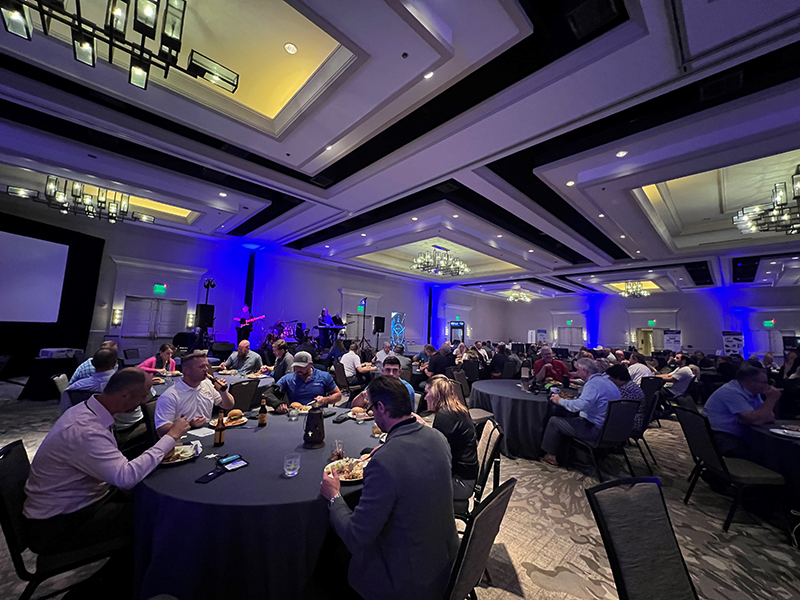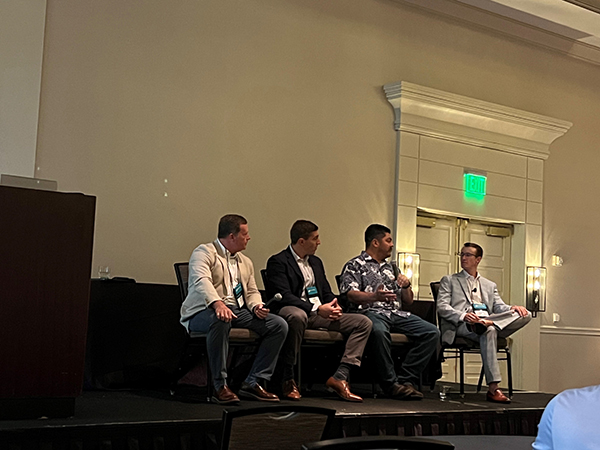
The 2024 Texas Glass Association Conference consisted of eight sessions spanning topics such as energy efficient glass, industry trends, pre-fabrication and more. The conference this year welcomed about 155 people to the Austin, Texas, area.
Energy-efficiency and specialty products are the future of glass
Executive Director of Architectural Sales for TriStar Glass Greg Oehlers hosted a session on the past, present and future of energy efficient glass. Oehlers said the energy crisis of the 1970s had a “devastating economic impact on the modern glass industry” and it sent a message to the industry to “keep up.”
Within 44 years, energy consumption in commercial buildings went down by 60% due in large part to the incorporation of energy-efficient glass. With new energy codes pushing for net zero building, the industry has only seven years to get it down another 40%, which willl have a huge impact on the glass industry in the near future, Oehlers said.

Oehlers expects to see more vertical extensions and sunshades incorporated into commercial buildings to help reach net zero. Increased costs to developers are expected to be anywhere between 30% to 80%.
During his keynote address, Max Perilstein, founder of Sole Source Consultants, also touched on the future of glass while discussing industry trends and forecasts.
Perilstein says products on the up-and-up right now include specialty and jumbo glass, vacuum insulating glass, bird-friendly glass, ballistic/forced entry glass, railings, showers and wet rooms, wine closets, and retrofits, among others.
Perilstein added that the industry is up on projects since 2023, meaning there are more projects in process now than last year. Education construction is up and backlogs are looking better. Perilstein says it also looks like multifamily housing will decline, while the remodeling market will hold steady in 2024.
Obstacles ahead for the industry include sustainability, specifically some confusion around the differences and requirements when it comes to Health Product Declarations and Environmental Product Declarations; how the upcoming U.S. election could potentially impact the industry and foreign imports, as there is a theory that quality and service are better.
"I'm constantly told that foreign imports are better than what's made in America," Perilstein said. "They have that reputation, but that's just not true. I hate that a lot of the time, we don't take pride in our manufacturing. We are just as good as what comes overseas."
Prefabrication opportunities and challenges
A panel consisting of Vice President of Sales at Gate Precast Co. Brian Griffis, Director of Architectural Systems at Gate Precast Co. Marc Angelillo and Project Manager Carlos Trevino discussed the future of pre-fabrication and how it’s evolved over the years.
The group said that pre-fabricated panelized construction has grown in acceptance and continues to be used more. Advancements in technologies like drones and GPS to measure openings has helped.
Griffis said three major benefits of pre-fabrication include
- the need for less manpower while there’s a labor shortage,
- it’s more sustainable and
- there’s cost savings associated with it.
However, there are some hinderances to the pre-fabrication process,Trevino said, including the nature and architecture of the building installers are working on. He provided an example of a hotel that is surrounded in balconies. The balconies make the process of installing pre-fabricated glass more complicated.
Another panel made up of project executive Jay Langston, developer Adam Soto and architect James Adams talked about the different perspectives of building from a general contractor, developer and architect. Soto emphasized the need for early involvement in the design process, while Langston highlighted the importance of selecting the right products for a project.
Both panels said early collaboration and clear communication across departments and teams are imperative to any successful project.